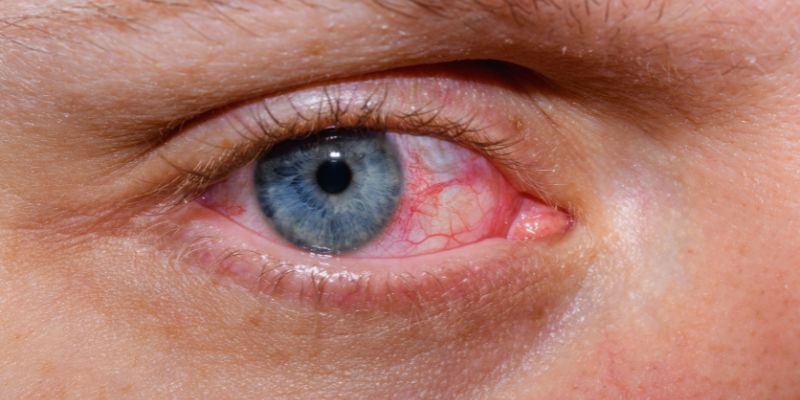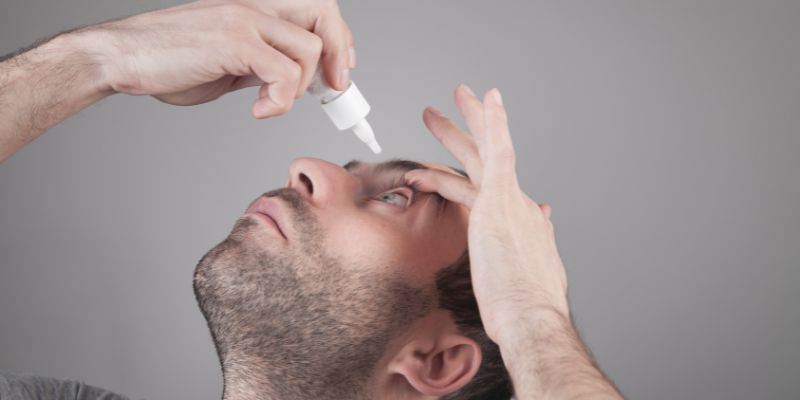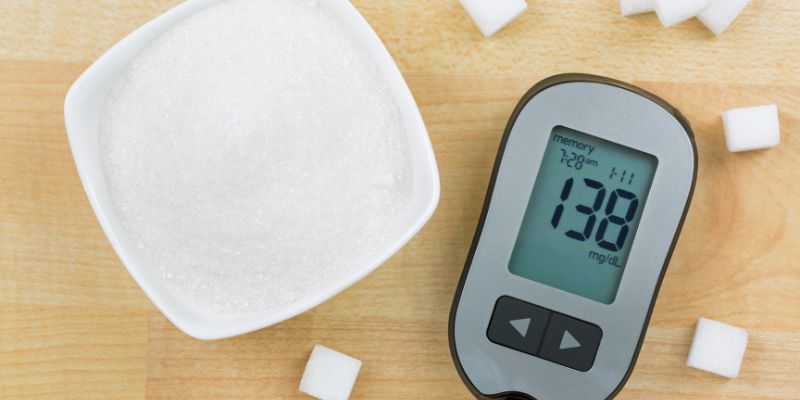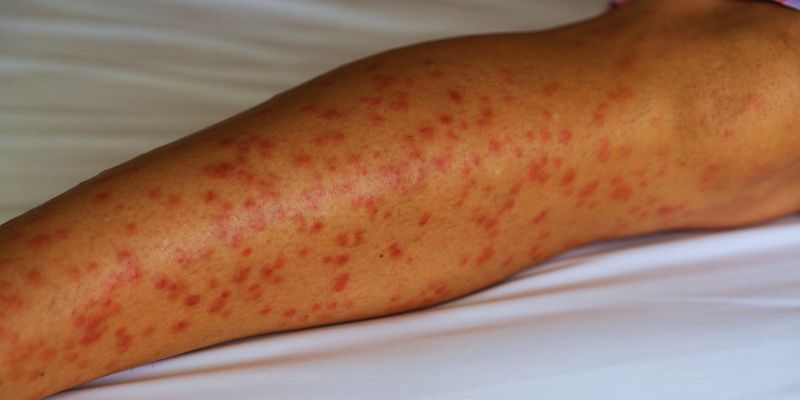Eye Drops For Your Dry Eyes: Different Types, Uses, And How To Choose
One annoying and uncomfortable ailment is dry eyes. Whether allergies, screen time, or environmental elements cause it, continual itching, burning, and redness can ruin your day. Fortunately, artificial tearsalso called eye dropscan provide much-needed relief. But given so many choicesfrom simple lubricating drops to ones designed for extreme conditionsselecting the correct one can be overwhelming.
Does one require drops free of preservatives? If you give a gel formula any thought? We will discuss the several kinds of eye drops for dry eyes in this guide, clarify their mechanisms, and assist you in choosing the greatest one for your particular demand. You'll be sure which eye drops to choose so your eyes remain pleasant, moistened, and healthy. Let's get right into investigating the finest eye drops for dry eyes!
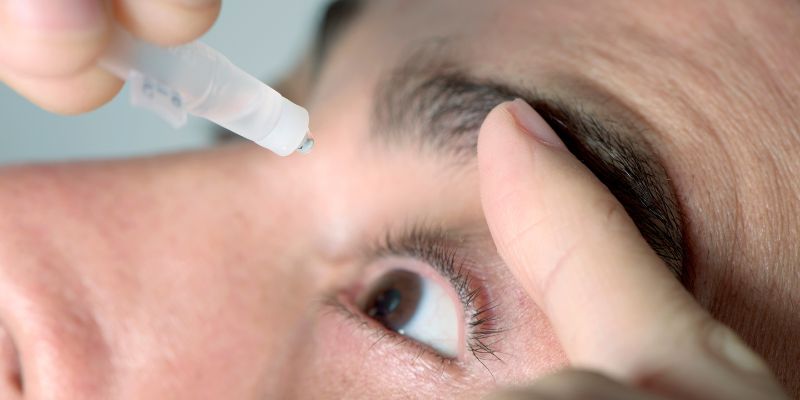
Types of Eye Drops for Dry Eyes
Numerous eye drops treat dry eyes by treating particular symptoms or causes. Knowing these several types will enable you to select the correct one for your requirements.
- Lubricating Eye Drops: The most often used kind of treatment for dry eyes is lubricating artificial tears or eye drops. They aid in easing dryness, irritation, and pain by adding moisture. Some give long-lasting comfort by being thicker and staying on the eye's surface. A basic lubricating drop might be sufficient if you have sporadic dry eyes. Look for long-lasting solutions for folks who are always dry.
- Preservative-Free Eye Drops: Preservative-free eye drops are excellent choices for sensitive eyes. Preservatives in certain artificial tears help to avoid infection, but they can aggravate the eyesparticularly if used often. Recommended for people with more severe dry eye symptoms or those who must use them several times a day, preservative-free drops are supplied in single-use vials.
- Gel Eye Drops: Thicker than ordinary lubricating drops, gel eye drops offer longer-lasting wetness. Particularly beneficial for people with great dryness or discomfort, they create a protective barrier over the eyes. Gel drops are best used before bed or when you won't be driving since the thicker consistency may momentarily obscure vision.
- Eye Drops for Redness: If redness accompanies dry eyes, you might be tempted to use eye drops designed especially to lower redness. These drops, though, are meant to constrict blood vessels and might only offer short relief. Overuse can aggravate redness with time. Since they are not advised for long-term dry eye treatment, keep artificial tears your first choice for persistent symptoms.
- Anti-Allergy Eye Drops: Anti-allergy eye drops can assist if allergies are the reason your dry eyes arise. Antihistamines in these drops help with allergic-related itching, swelling, and discomfort. If your symptoms are connected to dryness and allergies, some drops also include lubricants to ease dryness.
- Prescription Eye Drops: Over-the-counter eye drops may not help in extremely dry eye cases. Prescription eye drops are available and competent to treat more advanced disorders. These eye drops may contain components meant to lower inflammation or boost tear generation. See your doctor about prescription choices if your dry eye disease isn't getting better with daily drops.
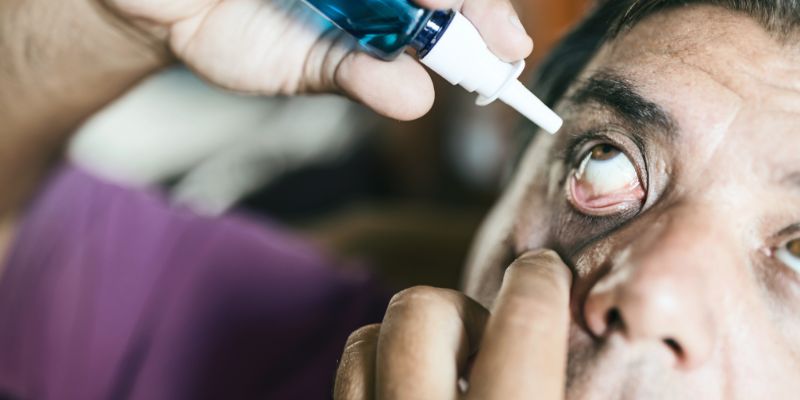
How to Use Eye Drops Correctly?
Correct use of eye drops guarantees the best relief from dry eyes. Apply these easy guidelines to get the correct results:
- Before adding the drops, wash your hands to prevent bottle contamination or your eyes.
- Head back and gaze up. To form a little pocket, gently draw down your lower eyelid.
- Without contacting your eye or eyelid with the bottle, squeeze one drop into the pocket.
- To let the droplets distribute evenly, close your eyes for a few minutes, then refrain from blinking.
- If you use several kinds of eye drops, wait five minutes between each application to prevent the medicine from diluting.
The right application ensures that by providing their best possible benefit the drops help to reduce dryness and discomfort.
Factors to Consider When Selecting Eye Drops
Several significant criteria should be considered when selecting eye drops for dry eyes. These will guide your choice of product for your ailment.
- Severity of Your Dry Eyes: Simple lubricating eye drops should relieve mild dryness. You could need gel-based or preservative-free drops if you have chronic or severe dry eyes. These choices lower the risk of discomfort and offer greater, long-lasting comfort.
- Frequency of Use: Preservative-free choices are ideal if you use eye drops several times daily. Regular use of preservative drops can irritate or worsen dry eyes over time. Convenient and safe for frequent usage are single-use, preservative-free vials.
- Underlying Conditions: Dry eyes sometimes indicate a more general problem, such as allergies or a chronic illness. Antiallergy drops could be beneficial if you have allergies. Prescription drops could be required to properly control symptoms for more severe disorders like Sjgren's syndrome.
- Ingredients: Always look over the components in your eye drops. Certain components, such as vasoconstrictors or preservatives in redness relief drops, may aggravate dry eyes over time. Search for drops, including glycerin or hyaluronate, which assist in retaining moisture and offer mild comfort.
- Contact Lens Wearers: If you wear contact lenses, you should pick eye drops, especially for lens usage. Certain daily eye drops can cause deposits to develop on your lenses, which would be irritating. Search for safe-to-use rewetting drops for contact.
Conclusion:
Choosing the correct eye drops for dry eyes requires knowing your particular requirements and symptoms. There is a solution meant for you whether your needs call for basic lubricating drops, preservative-free choices, or even prescription eye drops. Remember your degree of illness, frequency of use, and any underlying allergies. Effective treatment depends equally on the careful application of eye drops. See a doctor for more advice if symptoms continue or get worse. Selecting the ideal solution can help you to guarantee that your eyes stay comfy, moistened, and healthy.

